UCann Cook Kids Camp - Session 2
Friday, July 25, 2025 9:00 AM – 4:00 PM
- DescriptionDuring the summer, UConn Dining holds two culinary day camps for children aged 10-13. Each camp is two days and runs from 9am-4pm. Camp 101 takes place on Monday and Tuesday and Camp 102 is on Thursday and Friday. A day at camp includes working one-on-one with our chefs and bakers to learn kitchen basics, food preparation, creating and eating tasty recipes, and a local field trip. Local field trips include UConn Dairy Bar/Creamery, UConn Bakery, or UConn Spring Valley Student Farm. Attendees will get a chef hat, apron, meals, and a recipe booklet.https://dining.uconn.edu/ucann-cook-camps/ (https://dining.uconn.edu/ucann-cook-camps/)
- Websitehttps://events.uconn.edu/dining-services/event/1000853-ucann-cook-kids-camp-session-2
More from Master Calendar
- Jul 2510:00 AMDoctoral Dissertation Oral Defense of Joshua DupontA primary goal in the design of resonant substructures is to introduce auxiliary dynamics to existing materials and systems, thereby facilitating passive regulation and tunable control of vibratory oscillations. To implement this control, metastructures may be engineered with spatially localized couplings, which transfer energy between the vibrating host and peripheral subsystems to modulate elastodynamic properties and responses. The traditional approach often builds upon a fixed design architecture, which may successfully unlock unconventional behaviors, but remains static in nature and thus difficult to adapt in variable or uncertain conditions. In addressing this challenge, this dissertation explores design, synthesis, and realization across a suite of passively operated, tunable electroelastic metastructures to tailor the dispersive characteristics of elastic wave propagation and suppress vibrations. The research focuses on passively tuned local resonance, integrated within the elastic host material via piezoelectric and electromagnetic coupling mechanisms. Emphasis is placed on preserving the practicality and scalability of each implementation, while quantifying sensitivities to parametric uncertainty, parasitic effects, and other functional dependencies. Each is designed to maintain compatibility and relevance under practical constraints, without relying on active control or geometric alterations of the host media. Dynamic features are first characterized using Lagrangian-based analytical models and numerical simulations, followed by experimental validation to demonstrate their effectiveness and explore practical enhancements for improve sensing and performance. In this doctoral thesis, three complementary strategies for electrically tunable, elastodynamic control are investigated and developed. The first approach utilizes traditional piezoelectric LC-resonators arranged with spatial gradings to engineer dispersive properties and steer elastic wavefronts. A comprehensive modeling framework based on the transformation matrix method predicts unit cell behavior and informs waveguiding calibration through the Generalized Snell's Law. Advancing the state of the art, a signal-correlation filtering technique is developed to achieve robust phase-modulation sensing near the locally resonant bandgap, where low-transmission levels have traditionally obscured measurements in noise. Building on this, uncertainty quantification is carried out to investigate experimentally observed discrepancies in waveguiding performance, highlighting the role of spatially distributed parametric uncertainty on measurable outcomes. The second strategy employs temporal modulation of piezoelectric shunt circuitry, forming multiple sideband resonances and corresponding transmission bandgaps. Implemented via a unique analog architecture, this approach offers smooth modulation across a broad frequency range, offering a compact, scalable, and reliable solution for multi-band wave filtering. The third approach extends the concept of piezoelectric LC-resonators to a fully non-contact electromagnetic coupling mechanism based on eddy-currents. With appropriate tuning and impedance compensation, this configuration implements—for the first time—a passively controlled wireless modulation of elastic waves, eliminating the need for physical connections to the host material. A lumped-parameter model captures the magneto-mechanical dynamics, supporting the design of wave-blocking metasurfaces and tuned beam dampers. Together, these three approaches contribute scalable, adaptable solutions for elastic wave modulation and suppression in diverse environments. This dissertation provides a comprehensive investigation into adaptive resonant metamaterials, contributing analytical models, robust measurement techniques, uncertainty quantification, and innovative tunable mechatronic syntheses. The findings not only advance capabilities in wavefield manipulation and vibration suppression but also offer fundamental insights into considerations and challenges relevant for future progress in smart, reconfigurable metastructures.
- Jul 2510:00 AMMasters Thesis Defense of Abigayle WardTools for Establishing the ECCP in Connecticut Soils Decades of manure application have raised phosphorus (P) in most Connecticut (CT) soils to excessive levels. While essential for crop growth, excessive soil P can pose a water quality risk as it may be lost due to leaching or runoff. The environmental critical concentration of P (ECCP) is the soil test P above which the risk of phosphorus leaching or runoff is high. An ECCP for CT soils has not been established. The ECCP of a soil can be estimated through soil extraction methods. In this presentation, selected extraction methods are compared across farm-scale management strategies and P-source histories. Alternative approaches and future recommendations for establishing an ECCP are discussed.
- Jul 2510:00 AMQuestions about Digital Accessibility? Join us for Office Hours!In April 2024, the Department of Justice issued an update to Title II of the Americans with Disabilities Act (https://nam10.safelinks.protection.outlook.com/?url=https%3A%2F%2Fwww.ada.gov%2Fresources%2F2024-03-08-web-rule%2F&data=05%7C02%7Citaccessibility%40uconn.edu%7C20c771e5a88d478a8e9308dd66f63f7d%7C17f1a87e2a254eaab9df9d439034b080%7C0%7C0%7C638779929987281013%7CUnknown%7CTWFpbGZsb3d8eyJFbXB0eU1hcGkiOnRydWUsIlYiOiIwLjAuMDAwMCIsIlAiOiJXaW4zMiIsIkFOIjoiTWFpbCIsIldUIjoyfQ%3D%3D%7C0%7C%7C%7C&sdata=L%2Bz6mRTbBflpXOJe9W3QB7cZ9xNsKm4I%2B5%2FLQclhc5c%3D&reserved=0) which requires state and local governments – including public universities – to ensure that their digital content is accessible to people with disabilities. These changes will impact many in our community, and we want to share information and resources that will help everyone prepare and comply with the new standards.What is Impacted? Any digital content that we provide or make available on behalf of the University of Connecticut must meet the standards set forth by this ruling, whether this content is provided directly by us or via third-party organization as part of a contract, licensing, or other agreement. This includes websites, digital files, social media content, and mobile applications.DeadlinesWebpages & ApplicationsCreated on or after April 2024 must be accessible at launch. Created before April 2024 need to be accessible by April 2026. Digital FilesCreated on or after April 2024 need to be accessible at launch. Created before April 2024 and still in use need to be accessible by April 2026. Created before April 2024 and not in use can be marked as archived and do not need to be remediated unless someone requests it. Technical Standard The Web Content Accessibility Guidelines (WCAG) Version 2.1, Level AA (https://nam10.safelinks.protection.outlook.com/?url=https%3A%2F%2Fwww.w3.org%2FWAI%2Fstandards-guidelines%2Fwcag%2F&data=05%7C02%7Citaccessibility%40uconn.edu%7C20c771e5a88d478a8e9308dd66f63f7d%7C17f1a87e2a254eaab9df9d439034b080%7C0%7C0%7C638779929987301355%7CUnknown%7CTWFpbGZsb3d8eyJFbXB0eU1hcGkiOnRydWUsIlYiOiIwLjAuMDAwMCIsIlAiOiJXaW4zMiIsIkFOIjoiTWFpbCIsIldUIjoyfQ%3D%3D%7C0%7C%7C%7C&sdata=GtBfaBbRmzVFT4Jwcx%2B5gcH9Ej1haYILGDt9MSwHiCk%3D&reserved=0) are the current technical standard for web content and mobile apps. Please note that UConn also has web standards (https://nam10.safelinks.protection.outlook.com/?url=https%3A%2F%2Fbrand.uconn.edu%2Fweb&data=05%7C02%7Citaccessibility%40uconn.edu%7C20c771e5a88d478a8e9308dd66f63f7d%7C17f1a87e2a254eaab9df9d439034b080%7C0%7C0%7C638779929987315699%7CUnknown%7CTWFpbGZsb3d8eyJFbXB0eU1hcGkiOnRydWUsIlYiOiIwLjAuMDAwMCIsIlAiOiJXaW4zMiIsIkFOIjoiTWFpbCIsIldUIjoyfQ%3D%3D%7C0%7C%7C%7C&sdata=IA0Va6a06XjzRJ8LZXG5PMuWZiM0%2FeMIREYo4qO3Mhs%3D&reserved=0) which must be adhered to. We require websites built on behalf of the University and/or using University funds to use a UConn domain and be hosted by UConn. While we know that our faculty and staff support efforts to provide accessible content and equitable experiences, performing this work and maintaining the standards going forward will be an ongoing, shared responsibility.
- Jul 2511:00 AMDoctoral Dissertation Oral Defense of Erik Wendt
- Jul 2511:00 AMErik Wendt Defense
- Jul 2512:00 PMCAM Presentation: Summer StudentsCAM Presentation Speaker: Title: TBD Via Webex: https://uconnhealth.webex.com/meet/pmendes (https://uconnhealth.webex.com/meet/pmendes)








